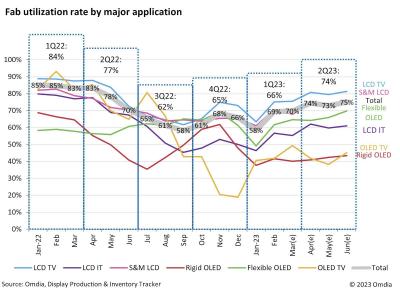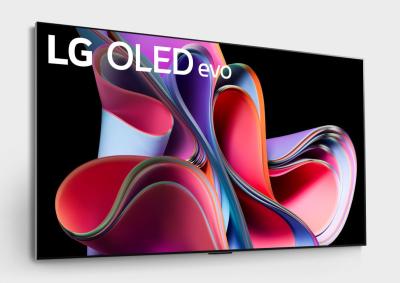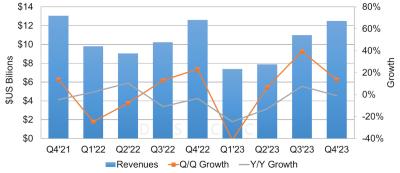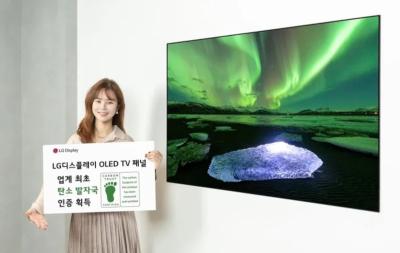What is an OLED TV?
OLED TVs use a display technology called OLED (Organic Light Emitting Diodes) that enables displays that are brighter, more efficient, thinner, flexible and with higher contrast and faster refresh rates than either LCD. Simply put, OLED TVs deliver the best picture quality ever!
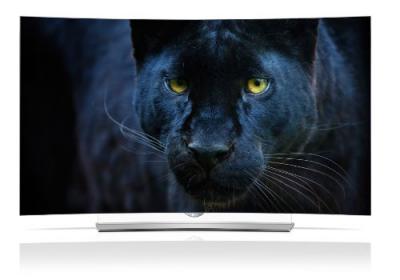
OLED TV technology
Each pixel in an OLED TV emits light on its own (in fact each pixel is made from 3 different OLEDs, red, green and blue). OLEDs are truly emissive devices with a simple design which gives them many advantages over current LCD technology:
- High contrast: in OLEDs we have true blacks as when a pixel is off it does not emit any light. In LCDs, the backlighting is always on and so true blacks are impossible to achieve. Even when compared to the latest high-end mini-LED backlit LCDs, the contrast of OLEDs is superior.
- High refresh rates: OLEDs can switch on and off much faster than LCDs.
- Better power consumption: OLEDs only consume light on lit pixels - as opposed to LCDs who always need to use the backlighting. The power consumption of OLEDs depends on the image shown, but in most cases OLEDs will be more efficient than LCDS.
- Flexibility: the simple design of OLEDs enables next-generation flexible, bendable, foldable and even rollable displays. LG is now shipping the world's first rollable TV, the 65" 65RX.
Click here for a more in-depth comparison between LCDs and OLEDs.
OLED TVs on the market - what can you buy today?
As of 2022, the leading company that produces OLED TV panels is LG Display - making panels ranging from 42-inch to 97-inch. These OLEDs offer the best image quality of all TVs on the market today. LGD is offering its OLED panels to many companies, including LG Electronics, Sony, Vizio and Panasonic.
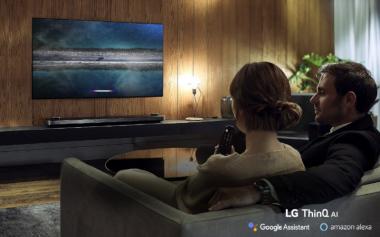
In 2022 Samsung joined LGD and started to produce its own OLED TV variant, called QD-OLED (which is based on blue OLED emitters and quantum dots color conversion technology). Samsung is producing 55-inch and 65-inch QD-OLED TV panels.
There are dozens of models available today, ranging from entry-level OLED TVs to high-end rollable, bendable and even transparent ones. Click here for the latest OLED TVs on the market.
Reviews of OLED TVs are terrific, and most experts and consumers agree that these OLED TVs are the best TVs ever produced - with virtually perfect image quality and beautiful form factors.
Direct Emission vs WRGB / QD-OLED
The most straightforward OLED architecture uses 3 color OLED sub-pixels (Red, Green and Blue) to create each 'pixel'. This is referred to as a direct emission OLED, and is the design used in mobile OLED displays (for example those used in Apple's latest iPhones and Watches).
For its OLED TVs, however, LG Display is using a different architecture, called WRGB (or WOLED-CF) which uses four white OLED subpixels (each created by using both blue and yellow OLED emitters) with color filters on top (RBG and W). The WRGB technology (developed by Kodak and now owned by LG Display) was found to be easier to scale-up for large-area OLED production, although it suffers from lower efficiency and more complicated design.
As we stated, Samsung's OLED TV architecture is based on blue OLED emitters and quantum-dots color conversion layers.
Further reading
The latest OLED TV news:
What can deuterium do for OLED displays?
The following is a sponsored post by Cambridge Isotope Laboratories
OLED has become the display technology of choice for many commercial products such as smartphones, laptops, tablets, TVs, automotive dashboards and wearables. OLED has advantages with improved image quality (better contrast, higher brightness, fuller viewing angle, wider color range, and faster refresh rates), lower power consumption, and simpler designs (ultra-thin, flexible, foldable, and transparent displays).
Cambridge Isotope Laboratories plant in Xenia, OH, USA
OLED, however, faces several technical challenges. While OLED TVs yield better picture quality than common LCDs, they are usually less bright. Research using a compound that has at least one hydrogen replaced with its heavier isotope, deuterium, is showing promise toward achieving greater brightness. Since the bonds between carbon and deuterium are stronger than those between carbon and hydrogen, materials made with deuterated compounds tend to have a longer lifetime, which allows OLED displays to run brighter but still last as long.
TCL CSoT shows new foldable and rollable inkjet-printed OLED prototypes
TCL CSoT had several interesting new OLED demonstrations at SID DisplayWeek 2023, all of which were produced by inkjet printing, which shows the company's commitment to the new production process.
First up is the company latest inkjet-printed panel, this time CSoT showed a 8K (7680 × 4320) 65" TV panel that is foldable (with a bending radius of 25 mm). The panel offers a peak brightness of 800 nits, a response time of under 1 ms and a refresh rate of 120Hz.
Reuters - Samsung and LG finally sign a WOLED TV supply agreement, Samsung to buy 2 million OLED TV panels in 2024
LG Display has been negotiating a WOLED TV panel supply agreement with Samsung Electronics for a long time, and last year the company were close to an agreement, but discussions were halted in July 2022, and Samsung continued to launch its QD-OLED TV range. Last month it was reported that the two Korean companies are in talks again, and now Reuters says that LG and Samsung finally officially signed the supply agreement.
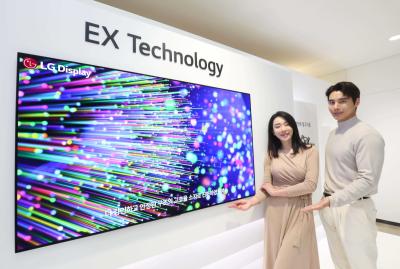
According to Reuters, LGD will start supplying panels to Samsung as early as this quarter (i.e. by the end of June 2023). Samsung agreed to order 2 million WOLED TV panels from LG in 2024, and this will grow to 3 million in 2025 and 5 million in 2026. The first panels will be 77-inch and 83-inch in size, but LG is likely to also supply smaller panels to Samsung.
LG installs 32 transparent OLED displays at Korea's Incheon airport to show Korea's vibrant culture
LG Display announced a new transparent OLED campaign at Incheon Airport, to show Korea's vibrant culture to travelers from all over the world, and experience Korea's four seasons and folktales.
The installation includes several different displays. One is large wall made from 18 55" OLED displays, a large video wall that "conveys the delicate patterns and colorful hues of Korean traditional folktales while also creating a comfortable openness thanks to its high transparency". Theere are also a total of 14 transparent displays attached to pillars and walls inside Incheon Airport's Tourist Center, utilized to showcase various information such as local times and global weather conditions as well as welcome messages and enchanting videos showing off the "endless beauty of Korean nature".
Omdia: OLED fab utilization remains low at 60% as the OLED industry hasn't yet recovered from the oversupply in 2022
Omdia says that the utilization at display production fabs is on the rise, recovering from 66% in January 2023 to 74% in the second quarter, as demand for TVs, laptops, monitors and smartphones is on the rise.
However, this is mostly true for LCD displays. OLED producers are still facing low demand, and fab utilization remains below 60%. The industry has yet to recover from the oversupply it experienced in 2022. This is true for both mobile AMOLED displays and OLED TV panels.
Samsung and LG are again negotiating a WOLED TV panel supply agreement
LG Display has been negotiating a WOLED TV panel supply agreement with Samsung Electronics for a long time, and last year the company were close to an agreement, but finally halted discussions in July 2022, and Samsung continued to launch its QD-OLED TV range.
According to new reports from Korea, the two companies have resumed there negotiations, with Samsung interested in buying around 200,000 to 300,000 panels for next year's TVs.
DSCC: OLED revenues to decline 7% in 2023, due to low demand for TV and smartphone panels
DSCC estimates that the OLED market will contract 7% in 2023, by revenues, to reach $38.7 billion. In terms of shipments, there will be a 1% decline from last year.
The two main OLED markets, smartphones and TVs, will both decline - OLED smartphone revenues will decline by 8% in 2023 (shipments will remain the same), while OLED TV panel revenues will drop 15% (12% by shipments).
LGD's OLED TV panels received Carbon Trust's Carbon Footprint Certification
Rtings.com burn-in tests show Samsung's QD-OLEDs suffer from worse burn-in compared to LG's WOLEDs
Review web site Rtings.com has performed an extensive accelerated longevity test for over three months, testing the latest QD-OLED and WOLED TVs.y
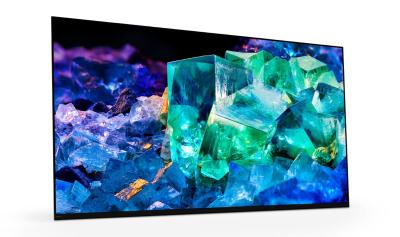
Rtings reports that both QD-OLED displays (Samsung S95B OLED and the Sony A95K) showed signs of image retention, and it seems in general that the QD-OLED displays suffer from worse problems compared to LG's WOLED. Some of Sony's WOLED TVs also showed signs of image retention.
LG Electronics starts selling its 2023 OLED TVs in the US
LG Electronics announced that it will begin to take pre-orders for its 2023 OLED TV range in a few days, and some of the TVs will begin shipping later this month. The company also announced the pricing of its new TVs.
Prices start at $1,399 for the 42-inch OLED C3 TV, the 65" OLED G3 will cost $3,299 while the 65" OLED C3will cost $2,599. LG will continue to sell some of its 2022 models, and also the $100,000 65" rollable TV.
Pagination
- Previous page
- Page 4
- Next page



